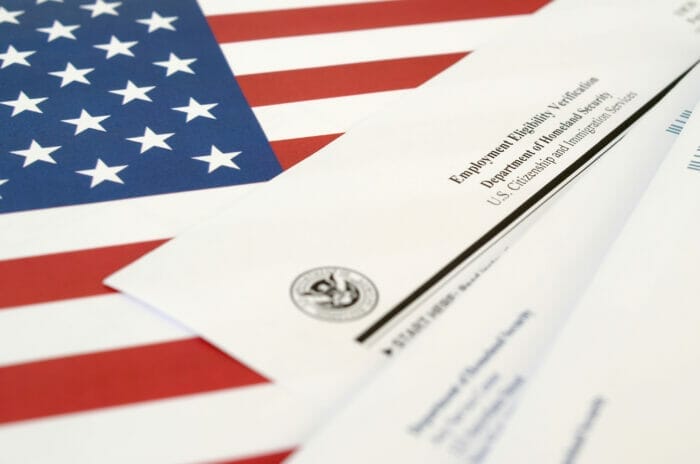
Every U.S. employer is required to provide Form I-9 to new employees in order to verify their eligibility to work in the United States. Given that this form is regularly updated, it’s important to remain cognizant of any changes. U.S. Citizenship and Immigration Services (USCIS) website regularly publishes pertinent updates. Below, we’ll provide a general overview of the basic compliance requirements.
Completing the Form in a Timely Manner
Every employee must be eligible to work in the U.S. when they are hired. To ensure eligibility, employers must provide (the most updated version of) Form I-9. Section 1 of the form must be filled out prior to the first day of employment and after the job has been offered. Note that the form should not be given prior to the job offer, as this could lead to suspicion of discrimination.
According to the “Thursday Rule,” once section 1 has been completed, the employer must complete section 2 within 3 days of the employee’s first paid day.
Providing the Required Documents
In order to prove eligibility, the employee must provide the appropriate work authorization documents (as shown on page 2 of Form I-9). They may use 1 document from List A or 1 document from List B and List C.
To satisfy the requirement, the new recruit may, for example, provide solely a U.S. passport (from List A). Alternatively, they may give both a U.S. driver’s license (from List B) and a social security card (from List C). In any case, the documents must be original — they cannot be photocopied or digitized — and the employer (or a representative) must see the documentation in person, even if the employee is hired from a distance.
If the document in question has been lost, damaged, or stolen, the employee may provide a receipt for the item for a limited period of time. For a list of acceptable receipts and their associated validity periods, see section 4.4 of the Handbook for Employers.
Dotting Your i’s and Crossing Your t’s
The employer should make sure that the form has been completed in its entirety (including signatures and dates for both sections) and that all the information is accurate. Once the work authorization documents have been turned in, they should be immediately copied and filed in the appropriate folder. To that end, it may be a good idea to keep separate files for current and former employees, as this will make it easier to fetch paperwork if USCIS asks for it. And to be on the safe side, the employer may also want to keep files for 3 years following the end of employment.
Lastly, it’s important to maintain the same filing practice for every employee. Failure to do so could result in questions around discrimination. Consistency, in this sense, is key.
We’ve got more helpful tips to improve your I-9 process here. Or do you need additional help on how to manage work visa compliance? We’ve got you covered.